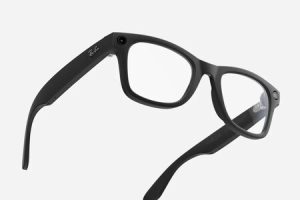Thanks to two FONDECYT projects, the Molecular Printing and Bioengineering Laboratory of the Faculty of Engineering and Sciences of the Adolfo Ibáñez University has an autonomous budget of more than 351 million pesos until the end of 2024.
Researchers from the Faculty of Engineering and Sciences of the Adolfo Ibáñez University, Viña del Mar, obtained two FONDECYT (National Fund for Scientific and Technological Development) for the development of synthetic molecular receptors for the diagnosis and treatment of neurological disorders such as Alzheimer’s, Parkinson and Epilepsy.
Both projects consider an autonomous budget that exceeds 351 million pesos, until the end of 2024, and will be developed in the Molecular Printing and Bioengineering Laboratory of the Adolfo Ibáñez University (UAI).
Ewa Moczko and Cesar Caceres they are researchers-academicians and leaders of both research projects. They also have the collaborative support of neuroscience experts and the Leicester Biotechnology Group, world pioneers in the generation of nanoMIPs or printed nanoparticles.
“Both research projects will be carried out using molecular imprinting technology, particularly molecularly imprinted polymeric nanoparticles. Molecular imprinting of polymers has gained interest and is a rapidly growing field that provides a technique for the production of robust synthetic receptors for a variety of molecules”, explains Ewa Moczko, one of the researchers.
For his part, César Cáceres, points out that: “in this research project a new approach is proposed for the early diagnosis of neurological disorders. This will involve the development of molecularly imprinted nanoparticles (nanoMIPs) as a new generation of biomarkers that will allow rapid detection and quantification of specific neurotransmitters and their distribution in biological samples. in vitro and live“.
Through both studies, the researchers are synthesizing nanomaterials that can be used as biomarkers to quantify certain imbalances of very important molecules in our central nervous system, such as Dopamine, Serotonin and Histamine. These imbalances can be directly related to neurological diseases of various kinds, including Parkinson’s, Epilepsy or Alzheimer’s; and the study would allow the discovery of a new family of robust biomarkers to identify early neurodegenerative diseases.
In Chile, currently 1.06% of the population has Alzheimer’s or other dementia. It is estimated that by 2050, 3.10% of the population will suffer from this disease or another dementia.
One of the research projects also seeks to stop the proliferation of Alzheimer’s once diagnosed. The purpose of the study is to open a new chemical and biological area, and to develop a promising alternative tool to face the global problem of Alzheimer’s therapy, using molecular imprinted polymers (MIPs) technology to block the neurotoxic action and thus stop the progression. of the illness.
The preliminary results of both projects show good progress, obtaining nanoMIPs for Dopamine, Serotonin and Histamine, while the results in tests in vitro show good selectivity towards selected molecules. “The results of both projects are expected to be significant, with substantial experimental data that will also be of value to other researchers around the world,” concludes Ewa Moczko.
The project hopes to have a profound impact on the therapy of neurological disorders, since with these tools they can provide critical elements for early clinical approaches in the treatment of the disease. In this sense, nanoMIPs could represent an important complement for the control and monitoring of pharmacological treatments to restore the physiological levels of neurotransmitters.
Thanks to these projects, the Laboratory of Molecular Printing and Bioengineering of the Faculty of Engineering and Sciences of the Adolfo Ibáñez University was equipped with Cytation 5 technology – the most modern in the country-, a plate multi-reader with fluorescence optical microscopy modules , phase contrast, bright field microscopy and color field microscopy, fully automated.












Add Comment